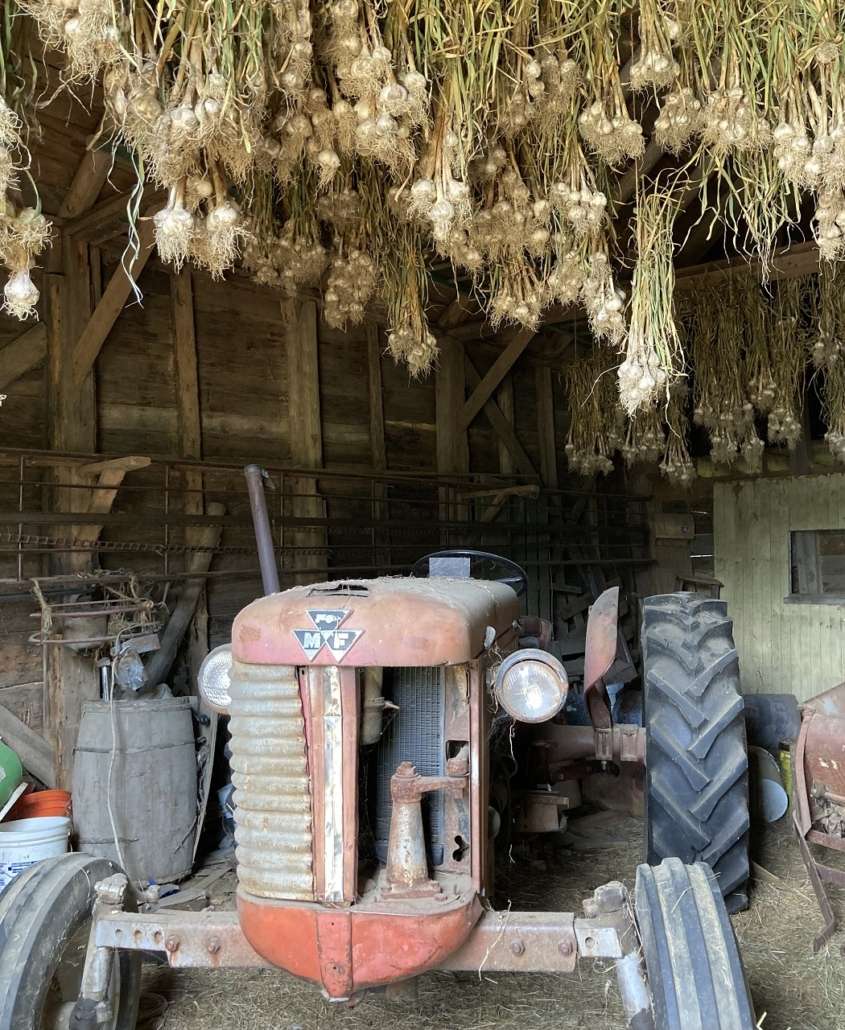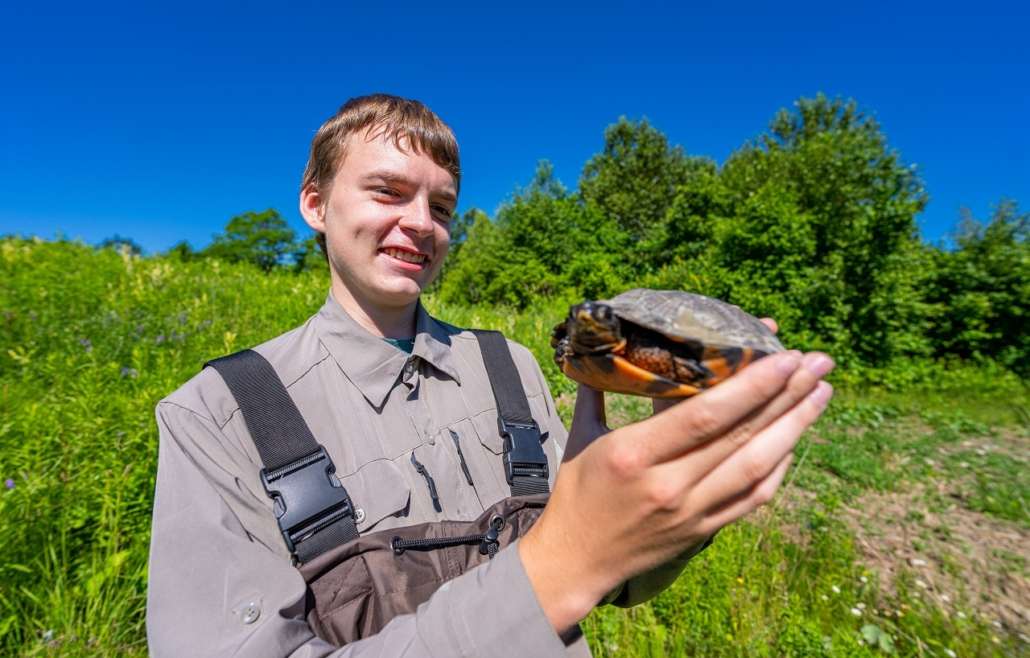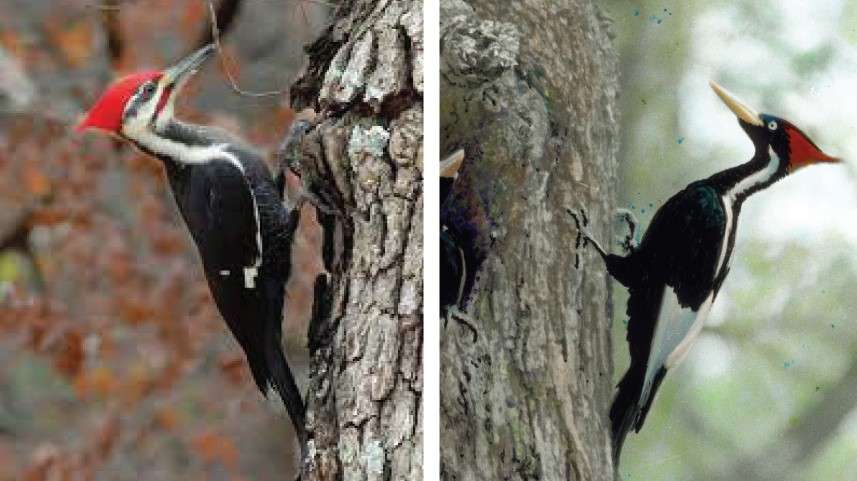SCORES & OUTDOORS: Hunter Praul’s love of nature involves slimy and scaly creatures
/0 Comments/in China, Scores & Outdoors/by Roland D. Hallee by Roland D. Hallee
by Roland D. Hallee
This came across my desk last week, and I thought it would make a good story for this week’s column.
Growing up in China, Maine, Hunter Praul said he always had an interest in exploring the outdoors, especially for reptiles and amphibians. He became an Eagle Scout, but even outside of his troop outings, he would find himself in forests, lakes and stream banks looking for frogs, toads, turtles and anything else he could find.
As a student researcher at the University of Maine, Praul has taken his love for nature’s slimy and scaly creatures and applied it to the mission of conservation in Maine.
When Praul graduated from high school, he was named to the Maine Top Scholars program, which provides full tuition and research opportunities for the highest achieving high schoolers in the state to attend the University of Maine.
Since early spring 2022, Praul has worked on a variety of turtle conservation research projects in the lab of Matthew Chatfield, assistant professor at the School of Biology and Ecology. Praul’s primary project aims to record the musk turtle population on the nearby Pushaw Lake, which is thought to be one of most northern (if not the northernmost) parts of the species’ habitat range.
“It would be interesting to get data and information on the most northern population to see if there are differences from the southern ones or even just more southern in the state, although there hasn’t been much research on them, especially in Maine,” Praul says.
Every month for the past couple months, Chatfield and Praul have headed out to three different plots near Gould’s Landing to lay six sardine-baited traps at each, strategically placing them at different levels of vegetation and depths along the shore. For that week, they return every morning to check the traps, repair any damage wrought by hungry raccoons or snapping turtles, and record their observations.
“I have worked with thousands of students in the classroom and dozens in a field or mentoring capacity and I have to say Hunter [Praul] is probably the most meticulous student I have ever met,” Chatfield says. “Every word and number on the data sheet gets recorded exactly right. He’s definitely one of the strongest undergraduate researchers I have come across.”
Praul admits, though, that he hasn’t had much luck finding musk turtles this summer. He has only found one, though he has seen plenty of the common painted turtles throughout the course of his study.
“We might be in the wrong spot in the lake, but there also might not be as many in the lake as we originally thought,” Praul says. “We’re taking a little break and we’re going to try again at the end of this summer to see if there’s a seasonal change in numbers.”
Praul is still hoping to use the musk turtle project for his senior capstone project, but if doesn’t find enough musk turtles to draw any substantive conclusions about the Pushaw Lake population, he will use data from a graduate project in Chatfield’s lab about wood turtles. Praul has been assisting graduate students with fieldwork using radiotelemetry to observe and record the nesting behavior of wood turtles, a heavily trafficked and internationally listed endangered species that purportedly has a stronghold in Maine.
Almost every week, Praul will join a graduate student researcher at their streamside site; the exact location is confidential, to protect the highly-trafficked turtles. They use a receiver to find the turtles observed for that study, which are tagged with radio telemeters, and record environmental and behavioral data about their subjects.
Turtles aren’t the only animal that Praul interacts with for this research, either.
“To help with finding wood turtles, there is a dog that has been trained to find them,” Praul says. “Sometimes her handler [Lindsay Ware of Science Dogs of New England] and I take her out to go sniffing through the grass and stream. If she finds a different species, she’ll pass on it, and if she finds a wood turtle, she’ll just stand over until we get there.”
The dog’s name is Chili Bean, Chili for short. Some of the wood turtles have names, too, like Crowley, Outlaw and Jennifer Lawrence — to make them easier to identify in the field, of course.
Outside of his herpetology projects, Praul also works at the UMaine Environmental DNA Laboratory conducting lab procedures. He said it’s “very interesting” and “cool to do,” but he prefers studying the natural world on a larger scale.
Praul plans to graduate this spring after his third year at the University of Maine. He isn’t exactly sure what he will do after that, but one thing is for sure: he wants to work with animals.
“I definitely still say herpetology is my main interest, but I also basically have an interest in all animals,” Praul says. “It makes it a little bit harder to choose something if there are so many options.”
Roland’s trivia question of the week:
Which pitcher is the all-time saves leader for the Boston Red Sox?
FOR YOUR HEALTH: Three Summer Tips To Get You Fitter Now
/0 Comments/in For Your Health/by Website Editor(NAPSI)—Summer is here, and Floridians seeking the best deals to help them get beach-ready and fit for swimming, surfing, biking, or family travel adventures have a variety of options to get active and fit. Here are three ways to take your fitness to a new level while saving some dough:
1.Take advantage of summer gym savings.
Many gyms are offering summer discounts to help you start a new fitness program or maintain your current one at a more affordable rate. You can search for individual deals at your favorite gym or fitness studio. Or, if you’re thinking about switching gyms but aren’t sure which gym is best for your needs, visit an “online market” or gym aggregator site that offers thousands of gym choices for one price, with no long-term contracts. For example, the Active&Fit Now™ program offers a fitness membership that lets you choose from more than 7,900 gyms for $29/month. Programs like this allow you to try multiple gyms and cancel at any time to find the one that suits your fitness goals without long-term contracts or any hidden fees.
2.Explore boutique fitness studios.
(NAPSI)—Summer is here, and Floridians seeking the best deals to help them get beach-ready and fit for swimming, surfing, biking, or family travel adventures have a variety of options to get active and fit. Here are three ways to take your fitness to a new level while saving some dough:
1.Take advantage of summer gym savings.
Many gyms are offering summer discounts to help you start a new fitness program or maintain your current one at a more affordable rate. You can search for individual deals at your favorite gym or fitness studio. Or, if you’re thinking about switching gyms but aren’t sure which gym is best for your needs, visit an “online market” or gym aggregator site that offers thousands of gym choices for one price, with no long-term contracts. For example, the Active&Fit Now™ program offers a fitness membership that lets you choose from more than 7,900 gyms for $29/month. Programs like this allow you to try multiple gyms and cancel at any time to find the one that suits your fitness goals without long-term contracts or any hidden fees.
2.Explore boutique fitness studios.
If you think you can’t afford a boutique studio, shop around for summer discounts. Or check whether fitness membership programs include studios, too. If you shop around, you’ll likely find a program that offers the right boutique option for you with discounted rates ranging from 20%-70% off. Be sure to look for no long-term contracts, or initiation or cancellation fees. You’ll want the flexibility to find the focused fitness activity that meets your needs.
3.Train in the cool comfort of home with online classes.
Sometimes you just don’t have time to make it to the gym, but you don’t want to skimp on your workout routine—so, let technology be your workout buddy. Many fitness programs allow you to train in the comfort of your home with on demand workout videos you can tailor to your needs. Some programs even offer free workout classes on streaming platforms like YouTube. Simply go to YouTube and put in your gym or program’s name to see if they offer a workout playlist. The Active&Fit® family of programs, for example, offers hundreds of free YouTube classes, including dance, cardio, strength training, and yoga. By joining one of the Active&Fit programs, like Active&Fit Now, you can gain access to more than 5,500 videos from top video workout producers like Les Mills, Shift, and Cycling Fusion.
It’s not too late to get active and fit for summer fun. Take the first step today by exploring the many gym and fitness program offerings and summer deals in your area.
Always remember to consult with your doctor before starting a new exercise routine and to discuss what types of exercises are safest for you. Persons depicted are not Active&Fit program members.
I’M JUST CURIOUS: So many uses
/0 Comments/in I’m Just Curious/by Debbie Walker by Debbie Walker
by Debbie Walker
There are so many uses for simple, everyday products, why do we need the “newest, high-priced chemicals”? Would you have dreamed of the other uses of vinegar? Wait, unless you are from the older generation that used these products before the chemical ones came out! Confusing?
Apple cider vinegar: Sore throat, tenderizing meat, dog’s coat, freshen feet, revive yellow plants, what do these all have in common? Vinegar fixes them.
Sore throat: Mix 1/4 cup apple cider vinegar with /14 cup of water for 15 seconds. Repeat every hour.
Tenderize meat: Blend 2 cups of the vinegar, 1/2 cup vegetable oil, 2 tablespoons of soy sauce, 1 tablespoon of Worcestershire sauce, 1 teaspoon sea salt and 1 to 2 tablespoons of fresh garlic. Marinate in the liquid for three hours before cooking.
Dog’s coat: Dull looking. 1/4 teaspoon of apple cider vinegar to his water bowl daily, gradually building up to 1 teaspoon of vinegar for every 15 pounds of body weight.
Freshen feet: Soak feet in a mix of 1/3 cup of vinegar and 1/2 cup of warm water for 30 minutes. Daily.
Revive yellow plants: hydrate plants with 2 tablespoons vinegar to 1 quart of water. Repeat once weekly for three weeks.
How about we try something different. Bubble Wrap. It can be used for things other than packaging. Snow proofing, hanger bumps, and winter proof windows.
Snow proofing your windshield: Use bubble wrap on windshield and back window to cover. In the morning pull it off. Much easier than scrapping.
Hanger bumps: Roll bubble wrap around hanger. It won’t leave bumps in your hanging clothing.
Winter proof windows: Spray the inside of each window with water then press the bubble side of the wrap against the frame. Keeps warmth inside and cold outside.
Back to food uses such as oatmeal: clean cast iron, Perk up houseplants and soothe aches and pains.
Clean cast iron: If cookware is looking shabby toss in 2 tablespoons oatmeal, rub with a dish rag. It absorbs grease and scrub away small food particles without ruining the cookware’s seasoning.
Perk up houseplants: Instead of commercial plant food try oatmeal. Mix 2 tablespoons dry oatmeal into the soil. Do this once a month.
Soothe aches and pains: Fill a tube sock with 1 cup oatmeal, tie closed and heat in microwave for 1 to 2 minutes. (Microwave in 30 second intervals so sock doesn’t overheat.)
Time for a chat? I got a new book the other day. It’s The Amazing Journey of American Women from 1960 to the Present. I have only begun reading it but it has me interested. I remember a lot of the situations. Such as the beginning of it being okay for woman to wear pants in certain situations.
Thank you for reading. Have a great week.
REVIEW POTPOURRI: William Henry Harrison
/0 Comments/in Review Potpourri/by Peter Cates by Peter Cates
by Peter Cates
William Henry Harrison
Former President #9, William Henry Harrison (1773-1841) achieved renown as an army captain in command at Fort Washington, Ohio, when he was in his 20s; as a governor in the Indiana Territory during the early 1800s; and being promoted to Major General after defeating the Indians in a battle at Tippecanoe which was a Wabash River settlement in Indiana (Hence his nickname: 1840 presidential campaign slogan with vice-presidential running mate John Tyler – “Tippecanoe and Tyler, too.”) – and his success in a number of other War of 1812 battles, including the defeat of the formidable Indian Chief Tecumseh.
After resigning from the military in 1814, Harrison served in the Ohio state senate, as Congressional representative from the Buckeye state and finally U.S. Senator.
Harrison’s wife Anna Symmes Harrison (1775-1864) was born in New Jersey; her father was then serving in the American army. When her mother died, her father returned home, disguised himself as a Brtish officer and took his year-old daughter through enemy lines to live with her maternal grandparents on Long Island for the duration of the Revolutionary War.
After the war ended, her father had become a judge on the New Jersey Supreme Court, and then moved to Ohio where he accumulated 100,000 acres of land while Anna attended private schools on Long Island and in New York City.
Judge Symmes came east to remarry and took Anna, her stepmother and other settlers back to Ohio to live on his acreage. Shortly after arriving, Anna met her future husband who instantly fell in love with her but Papa considered Captain Harrison a poor prospect due to his low salary and refused his consent.
Anna was undeterred and, when her father was away, the couple married on November 22, 1795, exactly 168 years before tragedy struck a later president, in Dallas, Texas. By 1804, the couple was living in the Indiana Territory in a spacious log house which she and her husband built themselves, not long after he became governor.
The couple gave hospitality to many passing through, especially preachers, and spearheaded the building of schools, churches and libraries throughout the Territory.
When her husband won the White House, other family members traveled east with him but she was too ill at that point. D.C. was quite chilly while the inaugural festivities were going on, the president participating fully and throwing all caution aside. His March 4 inauguration speech clocked in at 75 minutes as he delivered it without any winter coat and hat.
The following day, already developing a cold, the president went shopping for groceries at an outdoor market and the cold worsened into pneumonia within a couple of days. He died a month later at the age of 68 and, on his deathbed, reciting one of the Psalms from memory.
Meanwhile Anna had recovered from her own illness back home in Ohio and had finished packing for the move when she received word of her husband’s death.
Congress gave her a $25,000 pension, which was the equivalent of the presidential annual salary and which would be granted to future presidential widows for several years.
She outlived her husband by 23 years, and nine of their ten children. Three of her grandsons, including the 22nd president Benjamin Harrison (1833-1901, who served from 1889 to 1893), fought on the Union side during the Civil War, a commitment she took much pride in even though she abhorred war as a general principle.
LIFE ON THE PLAINS – The South End Arena: The era’s teen hotspot
/2 Comments/in Life on the Plains/by Roland D. Hallee
Arthur Gagne, right, and son Carl, standing in the South End Arena location. Note the boards around the area. (contributed photo)
 by Roland D. Hallee
by Roland D. Hallee
This week, we’re going to take a closer look at a teen hotspot during those years, 1950s and 1960s.
The South End Arena was founded by a Waterville police captain, Arthur Gagne. He had a vision to provide a place for local teens to gather in a safe and family-friendly environment.
But, the venue was not just used for winter ice sports. Prior to that, it was the site of many boxing matches held in the city. But, that was before my time.
My first experience at “Art’s”, which is what we called it, was to participate in public skating, usually on the weekends. When you first arrived, you would go into a warming shack to pay the admission fee, usually minimal – I want to say 25-cents, but my memory doesn’t quite cooperate. It was a tar-paper shack with wood shavings on the ground so your skates wouldn’t make contact with the dirt floor. There was a wood-burning stove, and the aroma of that was mesmerizing. You could smell it for blocks.
You would put on your skates, maybe socialized a bit, then go out the door onto the ice surface. The rink was Olympic size, larger than your average ice surface today. So, there was plenty of room for experienced skaters, and beginners.
Beginners would usually gather in a corner, and fall more times than they moved. The more experienced would skate around the rest of the rink. Sometimes, when Arthur wasn’t looking, we would form a human-whip. That was a blast, especially the further out you were on the line. Arthur didn’t care for us doing that because of the risk of injuries. But, we were young, enthusiastic, and maybe a little naïve as to what could happen.
Of course, later at night, after public skating ended, we would organize a pick-up hockey game. Some of Waterville’s finest hockey players came from the “South End,” affectionally known as the “Rink Rats.” We would take on all comers, and would usually prevail against challenging teams from other parts of the city. There were no bleachers around the rink. Spectators had to stand in the snowbanks, with no screens nor glass to protect them from errant pucks. You had to keep your eyes on the action.
Once the hockey was done, it was time to get down to work. In order to get in to public skating for free, you would join the scraping gang. You would grab a scraper, most of which were fabricated from old street/traffic signs with a wooden handle attached. The steel made for very thorough clearing of the snow that had accumulated from the night’s skating. Then, out came the fire hoses and the beginning to lay a fresh layer of ice, sometimes causing it to be at the arena into the early morning hours. Some would nap on the counter, and the benches in the warming shack until it was their turn to take over.
But Arthur wanted to offer more to the local teens. So, later, he constructed a building more like a ski lodge, with a small concession stand, juke box, a pool table, and, of course, a place to put on your skates to hit the ice.
You were also expected to be on your best behavior. Arthur had a zero tolerance for unacceptable conduct. I don’t quite recall what the punishment was, because we all knew what was expected of us. Not many were reprimanded.
As the years went by, and Arthur became unable to continue with what we called the “Youth Center,” until his passing, his son Carl took over. Carl had a history of playing hockey, having been the goaltender for the Waterville High School hockey team in the late 1950s.
But it was now the 1970s and times were changing. The arena soon began to deteriorate, and funding to keep it going was eliminated. Unable to continue with the financial responsibilities, the arena was closed, and passed into history.
Whenever I drive by the site of the old rink, I always think I would like to stop to take a look, to reminisce the days of my youth, but that would mean trespassing on someone’s property. To access the rink back in those days, you actually went up Arthur’s driveway to get to the shack and the rink, which were located behind his home.
For some of us, memories are all we have left of the old South End Arena.
FOR YOUR HEALTH – Maternal Health And Dental Health: How They’re Linked
/0 Comments/in For Your Health/by Website Editor (NAPSI)—Every step of the way, women, especially mothers, have a lot to juggle. While trying to conceive, being pregnant, raising children and going through menopause, their to-do lists are long. One important task which may not be the first to come to mind is maintaining good oral health.
(NAPSI)—Every step of the way, women, especially mothers, have a lot to juggle. While trying to conceive, being pregnant, raising children and going through menopause, their to-do lists are long. One important task which may not be the first to come to mind is maintaining good oral health.
“Oral health plays a role in all stages of life and it pops up often for mothers,” said Kyle Dosch, DDS, a licensed dentist who serves as Delta Dental of Washington’s dental director. “Demonstrating and teaching the importance of good oral health habits is critical to the overall health and well-being of you and your family.”
Pre-pregnancy
There is evidence to suggest a correlation between oral health and fertility. Women with periodontal disease took nearly seven months to conceive, whereas women without periodontal disease took only five months, on average.
Early Pregnancy
Many expectant mothers experience morning sickness and, as bothersome as it is to go through, it can also have negative effects on a woman’s oral health, particularly her teeth. Stomach acid can weaken tooth enamel, leading to greater risk for cavities. Dentists recommend rinsing your mouth with water after vomiting to help wash away the acid. Choosing healthy snacks such as fruits and vegetables, which can help clean bacteria off teeth, as well as plenty of water, are best for when pregnancy cravings kick in.
During Pregnancy: What To Do When You’re Brushing For Two
Up to 75% of pregnant women have gingivitis, an early stage of periodontal disease. Periodontitis has been linked with having a negative effect on pregnancy, inducing premature birth or low birth weight of the baby. Regular dentist check-ups, brushing and flossing can help prevent this.
Postpartum
Mothers with tooth decay can pass cavity-causing bacteria to their babies by doing such things as cleaning pacifiers in their own mouth. Rinsing with clean water is a safer way for mom to keep an eye on a baby’s oral health.
Motherhood
Children of mothers who have high levels of untreated cavities or oral health problems are three times more likely to have cavities. This can be due to poor education on oral health or from sharing drinks and utensils. This can transfer cavity-causing bacteria from a mom’s mouth to a child’s. Taking time to brush and floss each day together can help keep mom and kids on track for their oral health goals.
Perimenopause And Menopause
Teeth and gums are highly susceptible to hormonal changes which take place before and during menopause. Because of these hormonal changes, a woman’s body can have a harder time fighting off minor infections and maintaining a healthy balance between useful and harmful bacteria within the mouth and on the gums. These hormonal changes can also cause increased sensitivity for teeth.
Visiting the dentist regularly will help keep these risks at bay.
Learn More
For further information about your oral health, visit Delta Dental of Washington’s blog at www.deltadentalwa.com/blog.
LIFE ON THE PLAINS: A pictorial look at The Plains
/2 Comments/in Life on the Plains, Local History, Waterville/by Roland D. Hallee
Water St. looking north. Notice the row of tenement buildings on the right. Those were built on the river bank, and were supported by stilts. They were removed in the 1960s and 1970s. (photo courtesy of E. Roger Hallee)
 by Roland D. Hallee
by Roland D. Hallee

Water St. looking south. Beginning with Poissonnier’s Market in right foreground. The Maine Theater marquis can be seen in the middle of the photo. On the left is a home that is still there today. (photo courtesy of E. Roger Hallee)

The Hose 3 substation of the Waterville Fire Department was located across the street from the Second Baptist Church. The building remains, but is now a residence. (photo courtesy of E. Roger Hallee)
REVIEW POTPOURRI: Vivid memories of our first TV
/0 Comments/in Review Potpourri/by Peter Cates by Peter Cates
by Peter Cates
Vivid memories of our first TV
I have vivid 1950s memories of some very engaging shows that were syndicated to the five channels that came in on the television sets in East Vassalboro (I should add that we were the last family in the village to get a TV set – a bulky used Philco which my grandmother Annabelle Ingraham Cates purchased for $30 from our local repairman, Richard Dowe, who was based in South China, and it arrived in early November 1959. For myself, it was the equivalent of the Second Coming, heaven on earth.).
Upon arrival, the usual sibling spat; I wanted us to watch the Three Stooges, then part of the nightly Mighty 90 show, hosted by Maine country and western singer Ken McKenzie, from 5 to 6:30 p.m., on the Portland CBS affiliate WGAN, channel 13 Mondays through Fridays. The others were screaming for Popeye on the Portland NBC affiliate WCSH, channel 6. For some very mysterious reason, I got my way and the other siblings, previously unacquainted with the Three Stooges, were roaring with laughter and forgot all about Popeye.
In addition to the Three Stooges’ 20 minute episodes, the show would feature other 1930s-40s Columbia Screen Gems shorts starring such comedians as Hugh Herbert, Leon Errol, Andy Clyde. etc., each evening, interspersed with Cowboy Ken chatting with the children gathered in the studio.
Around Christmas, Santa Claus would answer letters from kids around the state; I wrote one and heard my name mentioned on the air, which led to feeling on cloud nine for at least a week.
One of the sponsors of the show was our own Farrington’s Clothing Outlet right here in South China and a very busy store during those years.
The last half hour was given over to an action show, one of five such series rotating weekly. They included the following: The Adventures of Sir Lancelot, starring British actor William Russell. The Adventures of Casey Jones, with Alan Hale Jr., later better known as the Skipper on Gilligan’s Island.
The Rough Riders, with Kent Taylor, Jan Merlin and Peter Whitney, itself a very gripping western dealing with three men who rode throughout the post-Civil War West dispensing justice to outlaws. I remember one episode in which Highway Patrol star Broderick Crawford did a guest appearance as a very evil murderer. Ivanhoe, starring Roger Moore, later, of course, 007 (James Bond) after Sean Connery.
The Buccaneers with Robert Shaw, who would later achieve even greater fame during the early ‘70s in the film classics, The Sting and Jaws.
Some more memories in the following weeks.
SCORES & OUTDOORS: The elusive pileated woodpecker, not to be confused with ivory-billed
/2 Comments/in Scores & Outdoors/by Roland D. Hallee by Roland D. Hallee
by Roland D. Hallee
You catch a fast-moving, swooping bird navigate through the thick forest of trees. It looks more like a shadow. What was that? It lands on the trunk of a nearby tree, and begins a slow, rolling whacking sound against the bark of that dead tree. You look closer, it’s a pileated woodpecker.
Although very common in the eastern United States, it can sometimes be quite elusive. You don’t generally see them often, because they prefer the protection of dense deciduous or coniferous forests.
The pileated woodpecker, Dryocopus pileatus, lives in Canada from British Columbia east to Nova Scotia. It can be found in most areas of the eastern United States, and west from Washington state south to California and east to Idaho and North Dakota.
Their numbers have increased from 1966 to 2014, according to the North American Breeding Bird Survey. Partners in Flight estimates a global breeding popultion of 1.9 million with 67 percent living in the U.S. and 33 percent in Canada.
The reason for the subject of this bird this week is the numerous photos that readers have been sending to this newspaper.
I have seen several of these birds around camp, and even saw one, once, sitting on an apple tree stump in my backyard, in the middle of Waterville.
The pileated woodpecker is one of the biggest forest birds on the continent. It is close in size to the crow.
They drill distinctive rectangular-shaped holes in rotten wood to get at carpenter ants and other insects. They are loud with whinnying calls. They also drum on dead trees. There flight is undulated (a bounding motion) as opposed to other birds straight flight paths.
Besides carpenter ants, pileated woodpeckers like woodboring beetle larvae, termites and other insects such as flies, spruce budworm, caterpillars, cockroaches and grasshoppers. They will also eat wild fruits and nuts. However, ants comprise 40 percent of their diet. Occasionally, you will find a pileated woodpecker at backyard feeders for seeds or suet.
Building a nest is quite a construction project that can last up to six weeks. The male begins excavating the nest cavity and does most of the work. The entrance hole is oblong rather than the circular shape of most woodpecker holes. For the finishing touches, the bird climbs all the way into the hole and chips away at it from the inside. The female begins to contribute as the nest nears completion. The cavity depth can be from 10 to 24 inches.
Of course, then you have the disagreement on how to pronounce the name. Well, in actuality, it can be pronounced two ways. You can use he soft “i” as in pill-ee-ated, or the hard “i” in pile-ee-ated. So, now we should have no more arguments about that subject.
Many people, though, confuse the pileated woodpecker with the ivory-billed woodpecker. The ivory-billed woodpecker is the largest woodpecker in North America, other than the imperial woodpecker of Mexico, which is feared to be extinct. The pileated is the second largest. Because of habitat destruction and, to a lesser extent, hunting, the numbers of ivory-billed woodpeckers, Campephilus principalis, have dwindled to the point where it is uncertain whether any remain, though there have been reports that they have been seen again, in Florida and Arkansas, although nothing has been substantiated. According to various sources, including the Cornell University Lab on Ornithology, almost no forests today can maintain an ivory-billed woodpecker population. Ivory-billed woodpeckers were most prominent in the southeastern U.S.
So, if you see that large woodpecker in Maine woods, you are most probably seeing a pileated woodpecker.
Roland’s trivia question of the week:
Which Boston Red Sox player holds the club record for intentional walks, Wade Boggs, Carl Yastrzemski, or David Ortiz?
Interesting links
Here are some interesting links for you! Enjoy your stay :)Site Map
- Issue for April 3, 2025
- Issue for March 27, 2025
- Issue for March 20, 2025
- Issue for March 13, 2025
- Issue for March 6, 2025
- Issue for February 27, 2025
- Issue for February 20, 2025
- Issue for February 13, 2025
- Issue for February 6, 2025
- Issue for January 30, 2025
- Issue for January 23, 2025
- Issue for January 16, 2025
- Issue for January 9, 2025
- Issue for January 2, 2025
- Issue for December 19, 2024
- Issue for December 12, 2024
- Issue for December 5, 2024
- Issue for November 28, 2024
- Issue for November 21, 2024
- Issue for November 14, 2024
- Issue for November 7, 2024
- Issue for October 31, 2024
- Issue for October 24, 2024
- Issue for October 17, 2024
- Issue for October 10, 2024
- Issue for October 3, 2024
- Sections
- Our Town’s Services
- Classifieds
- About Us
- Original Columnists
- Community Commentary
- The Best View
- Eric’s Tech Talk
- The Frugal Mainer
- Garden Works
- Give Us Your Best Shot!
- Growing Your Business
- INside the OUTside
- I’m Just Curious
- Maine Memories
- Mary Grow’s community reporting
- Messing About in the Maine Woods
- The Money Minute
- Pages in Time
- Review Potpourri
- Scores & Outdoors
- Small Space Gardening
- Student Writers’ Program
- Solon & Beyond
- Tim’s Tunes
- Veterans Corner
- Donate










